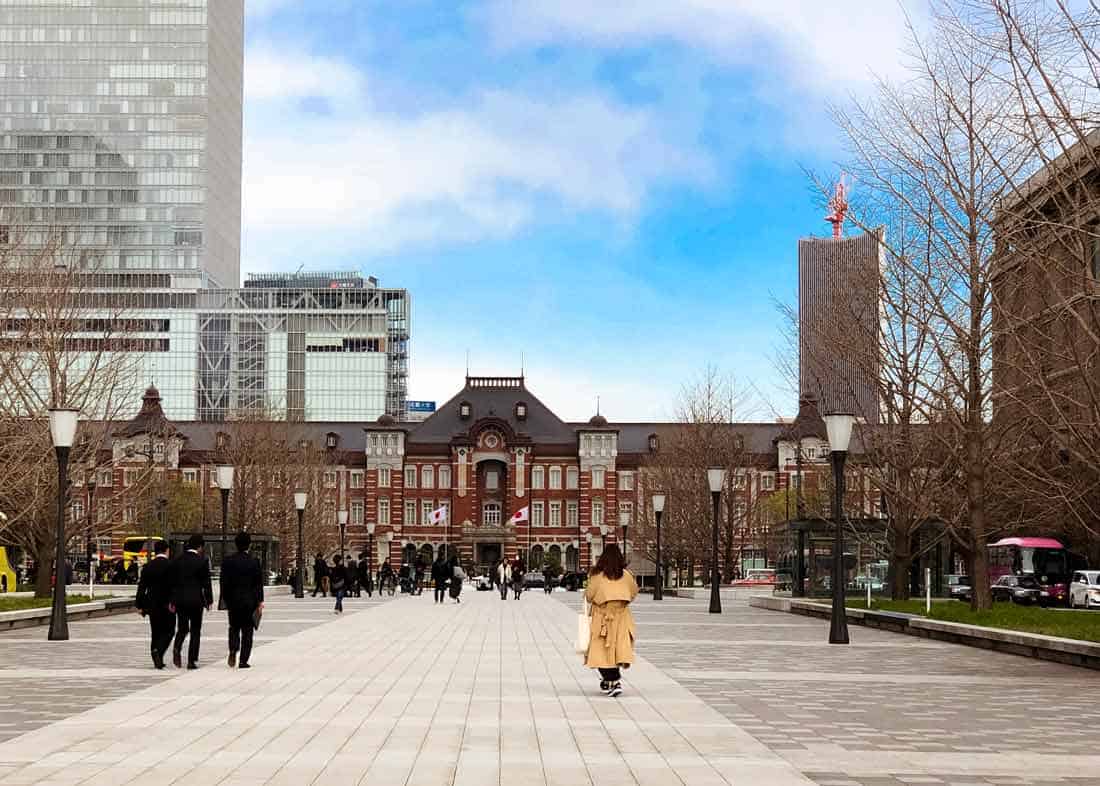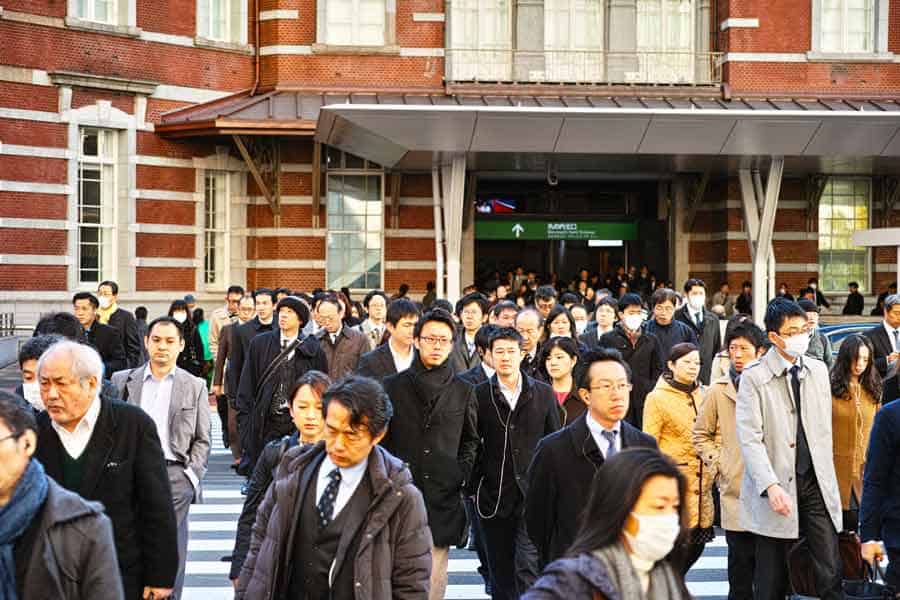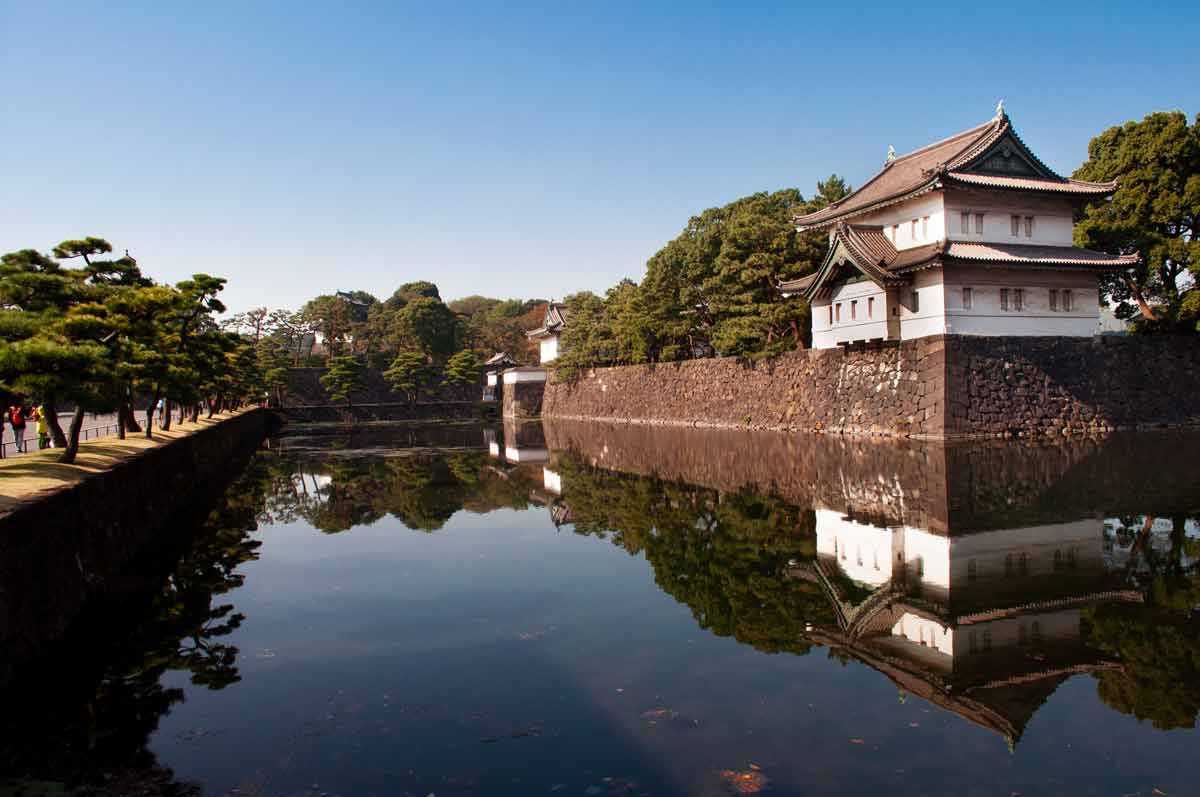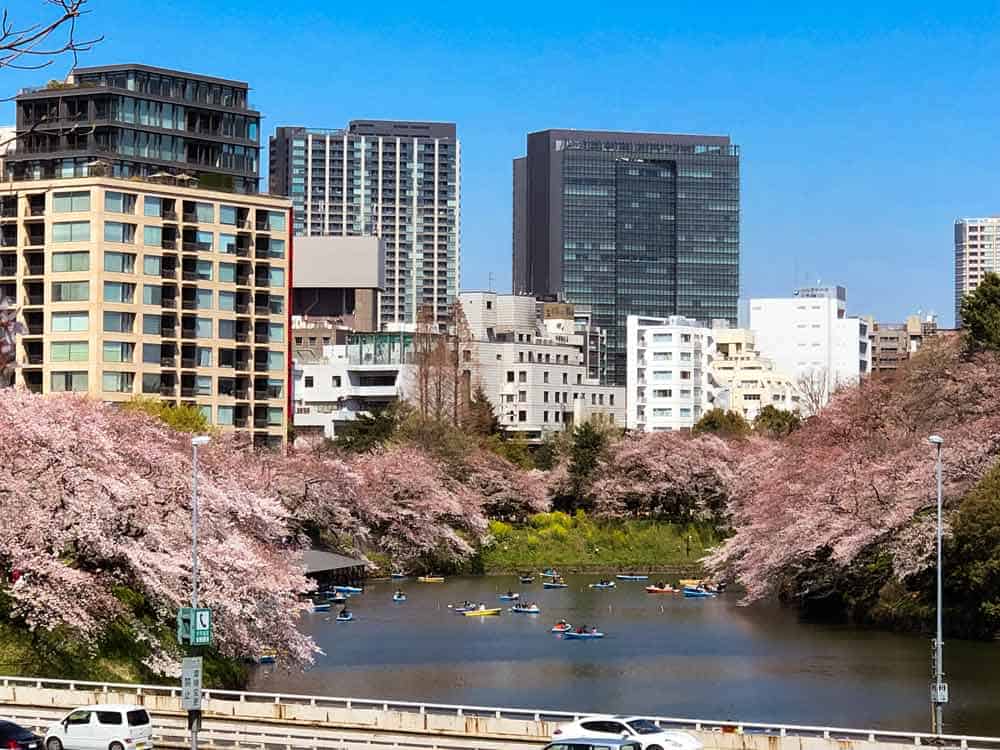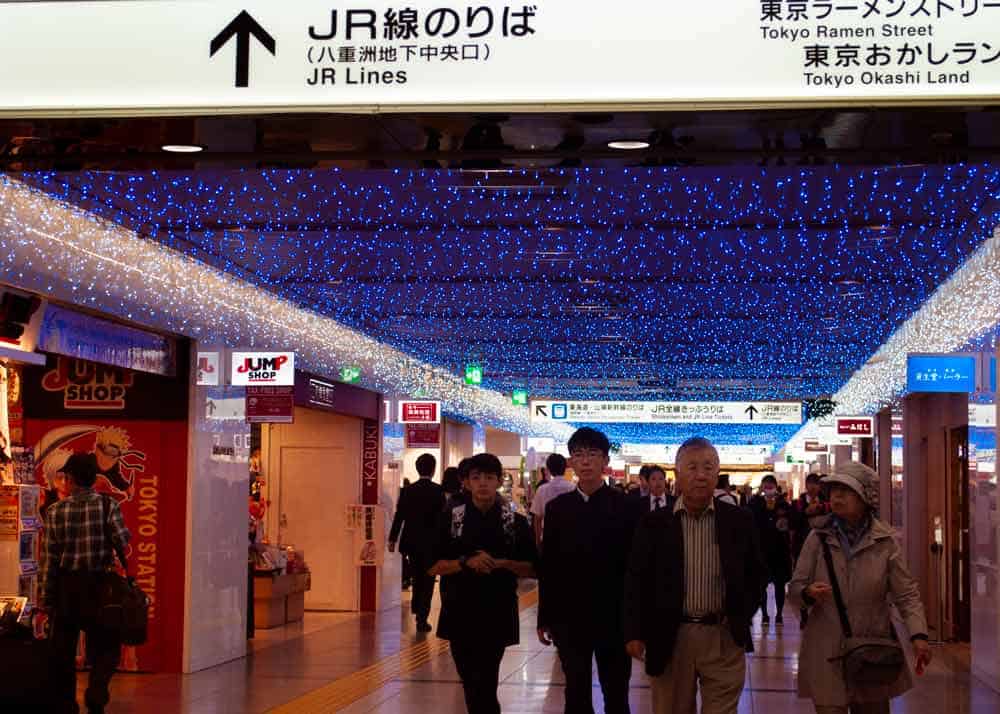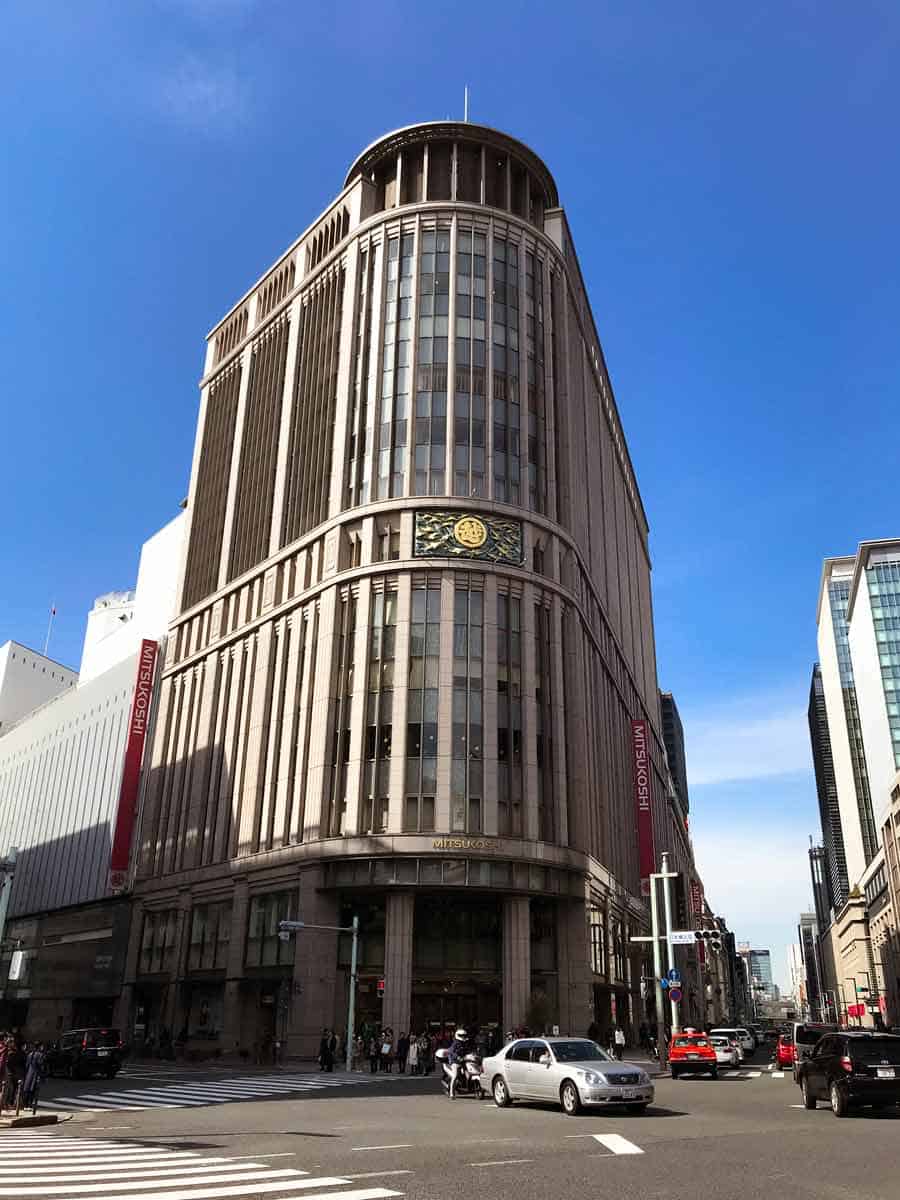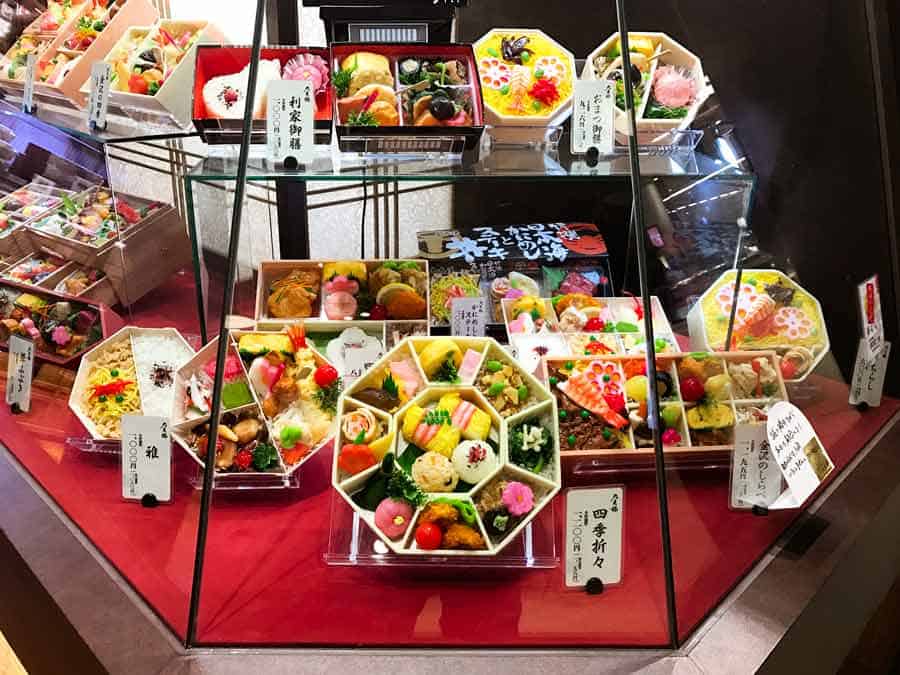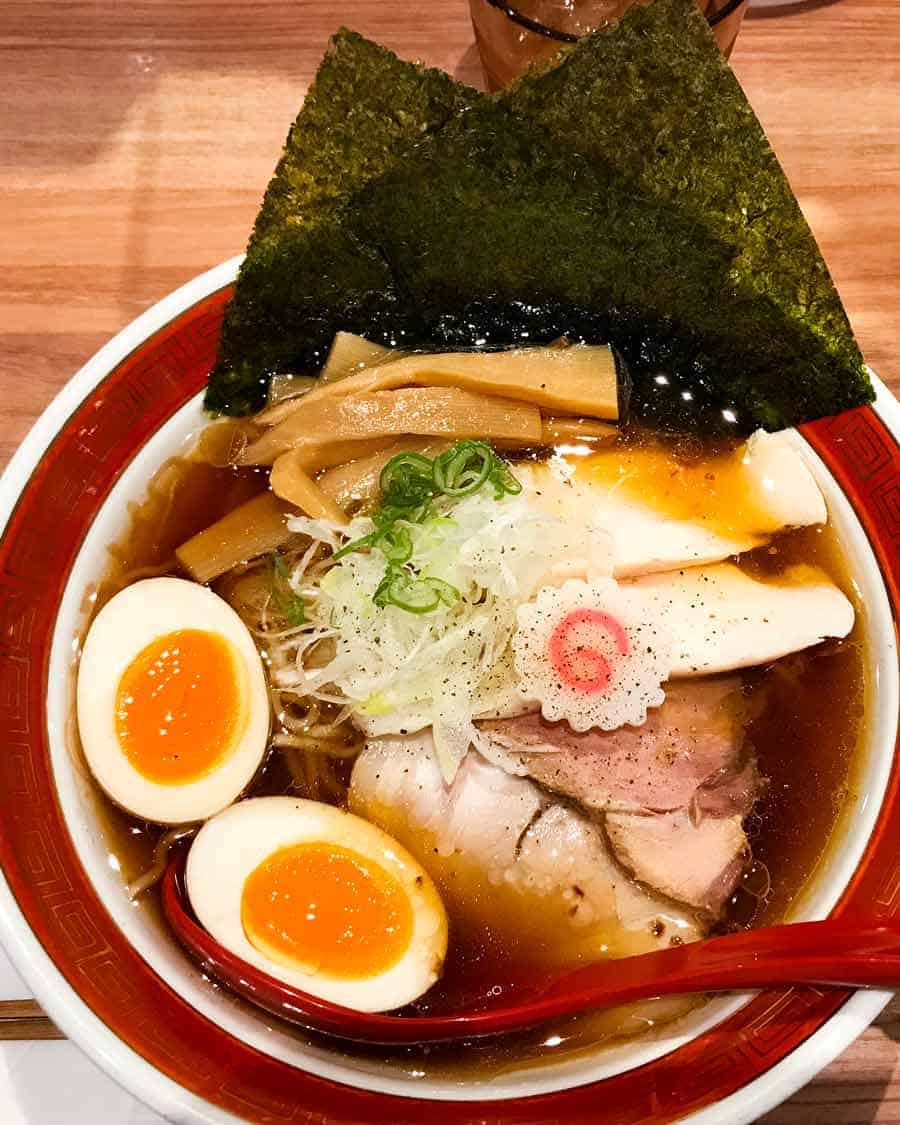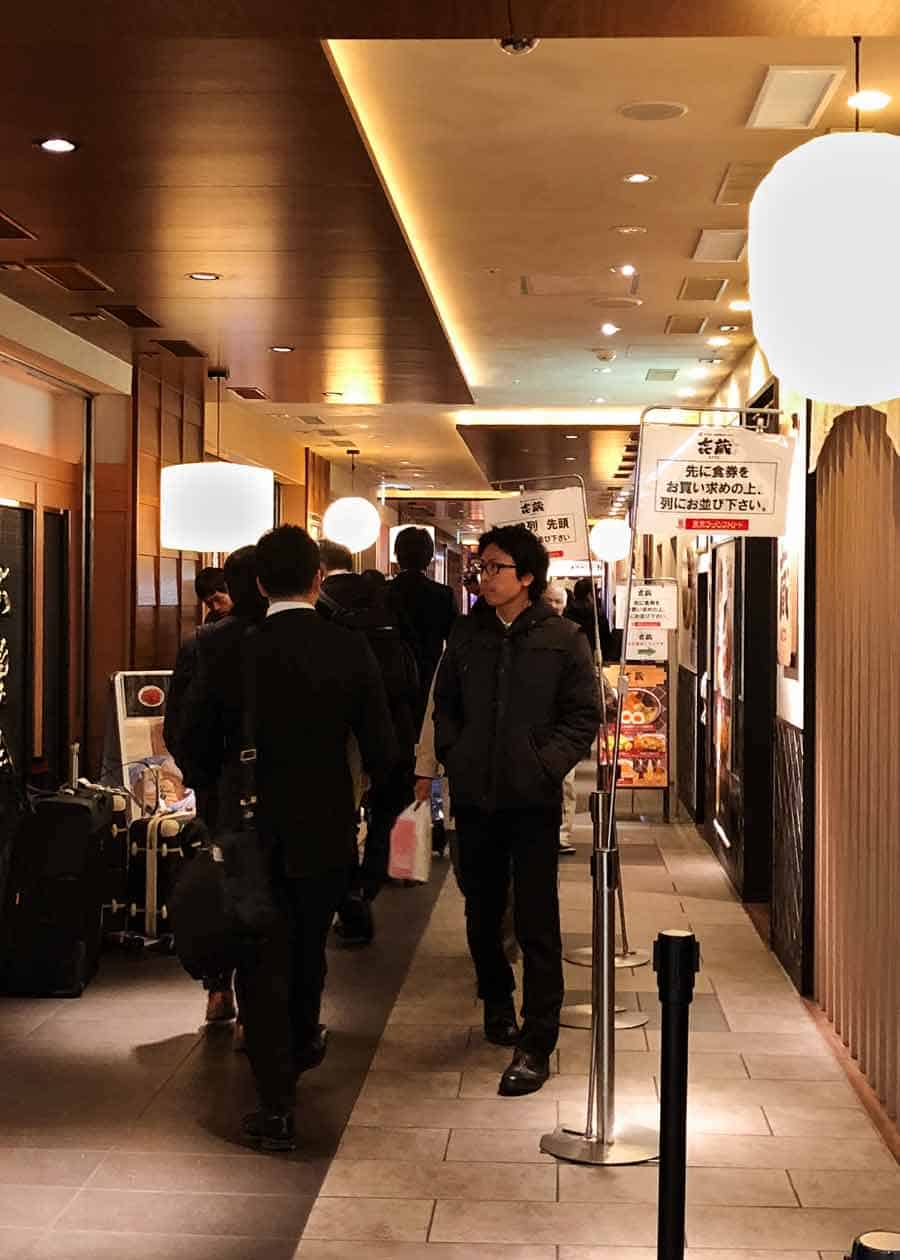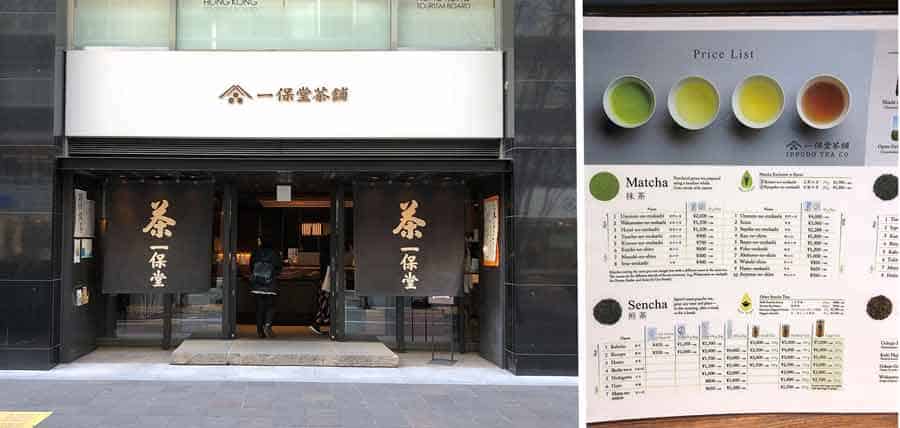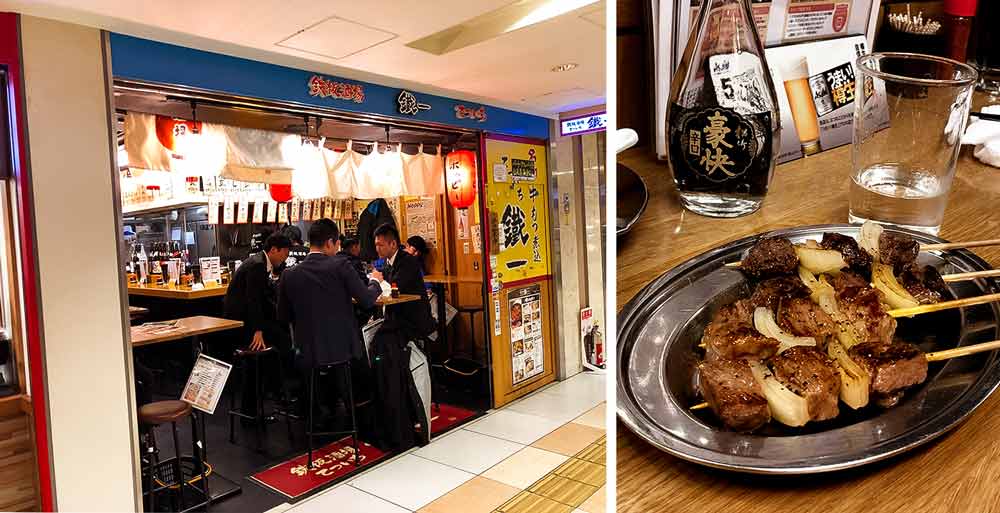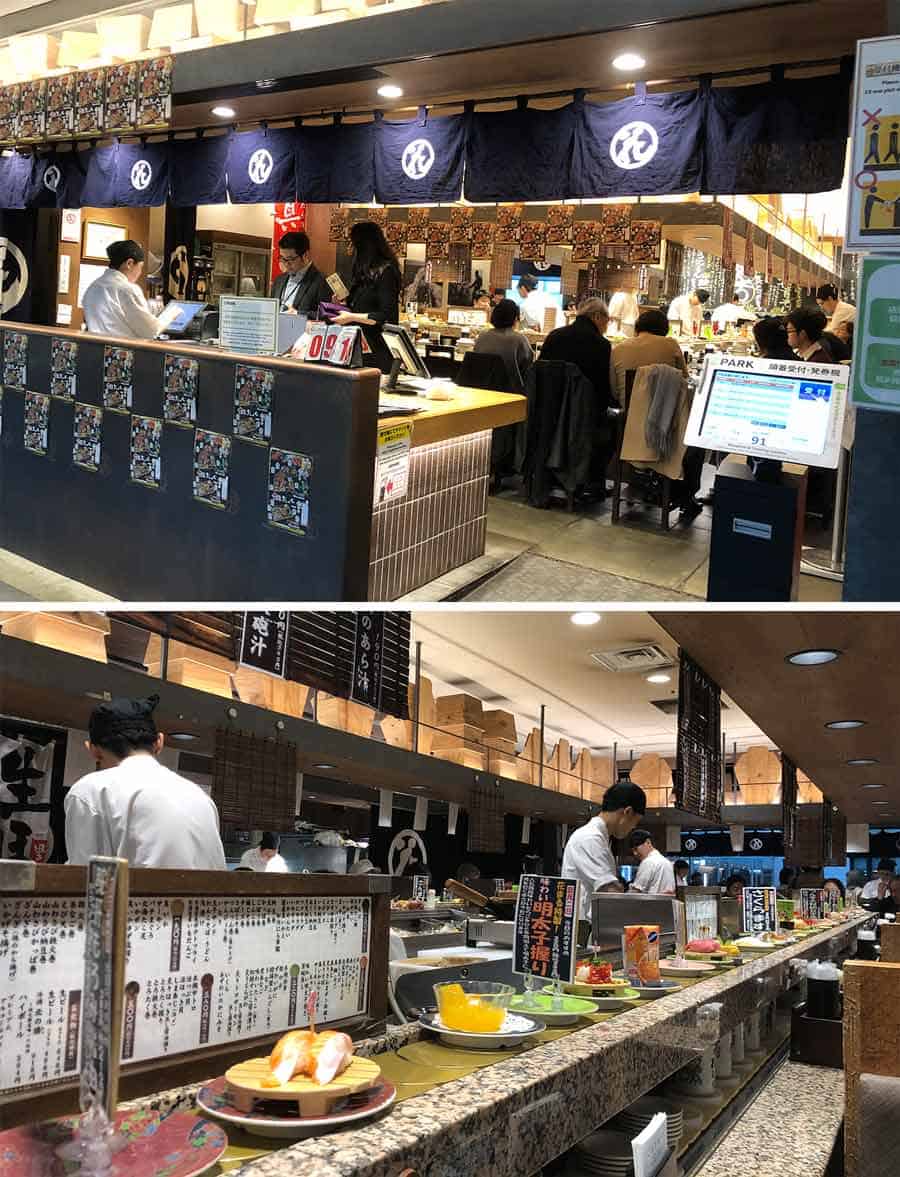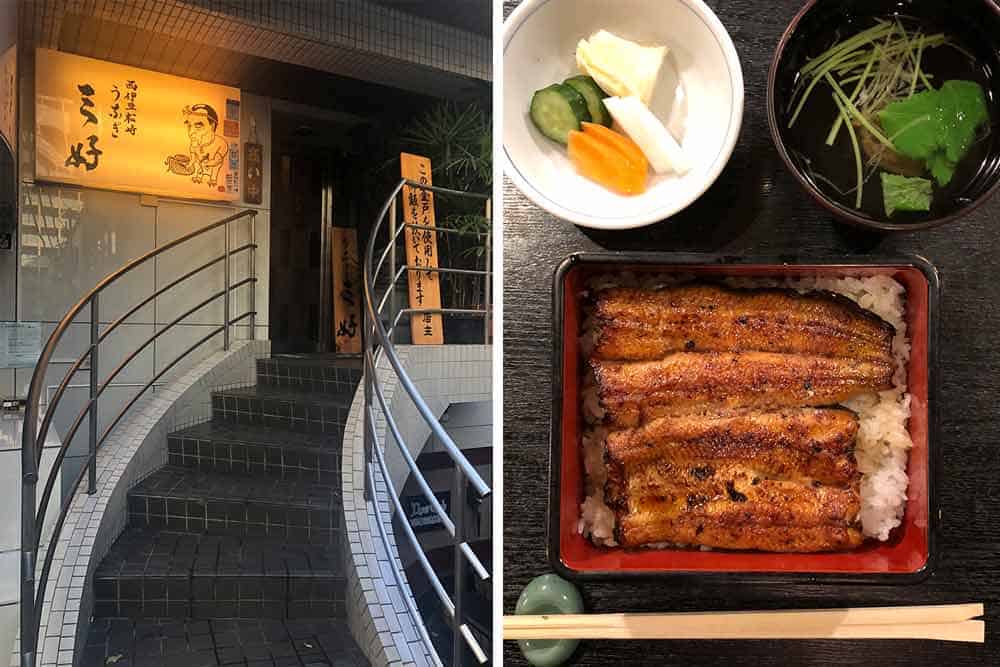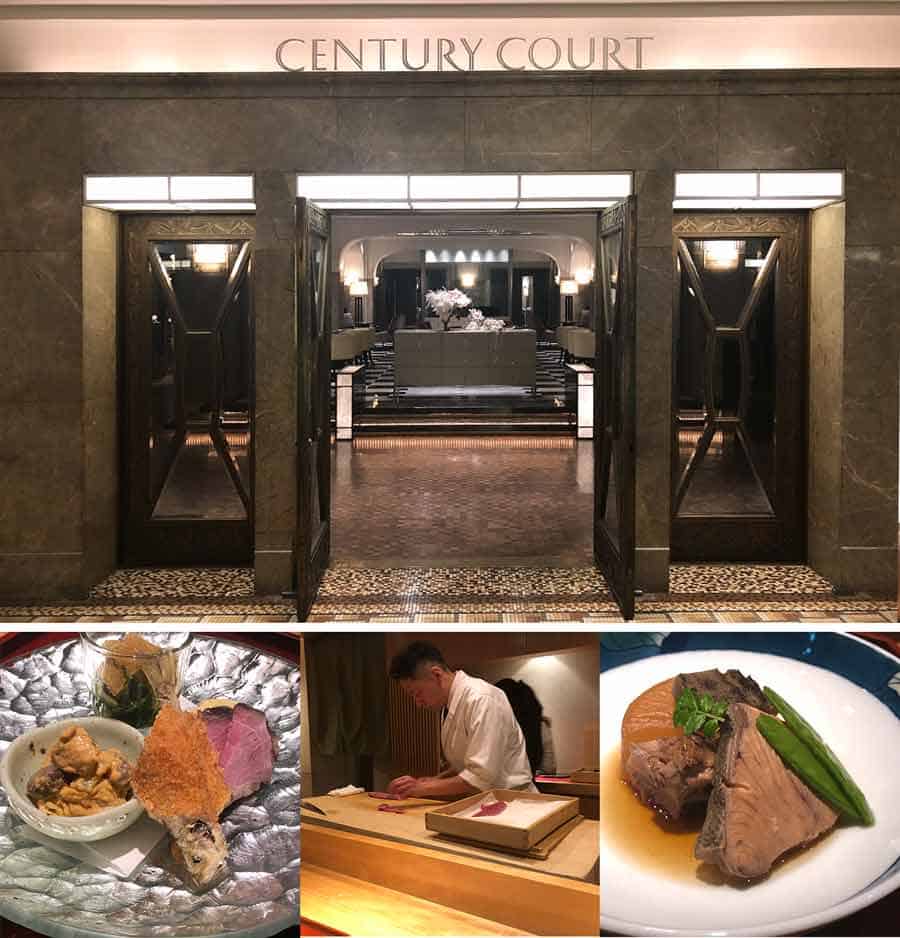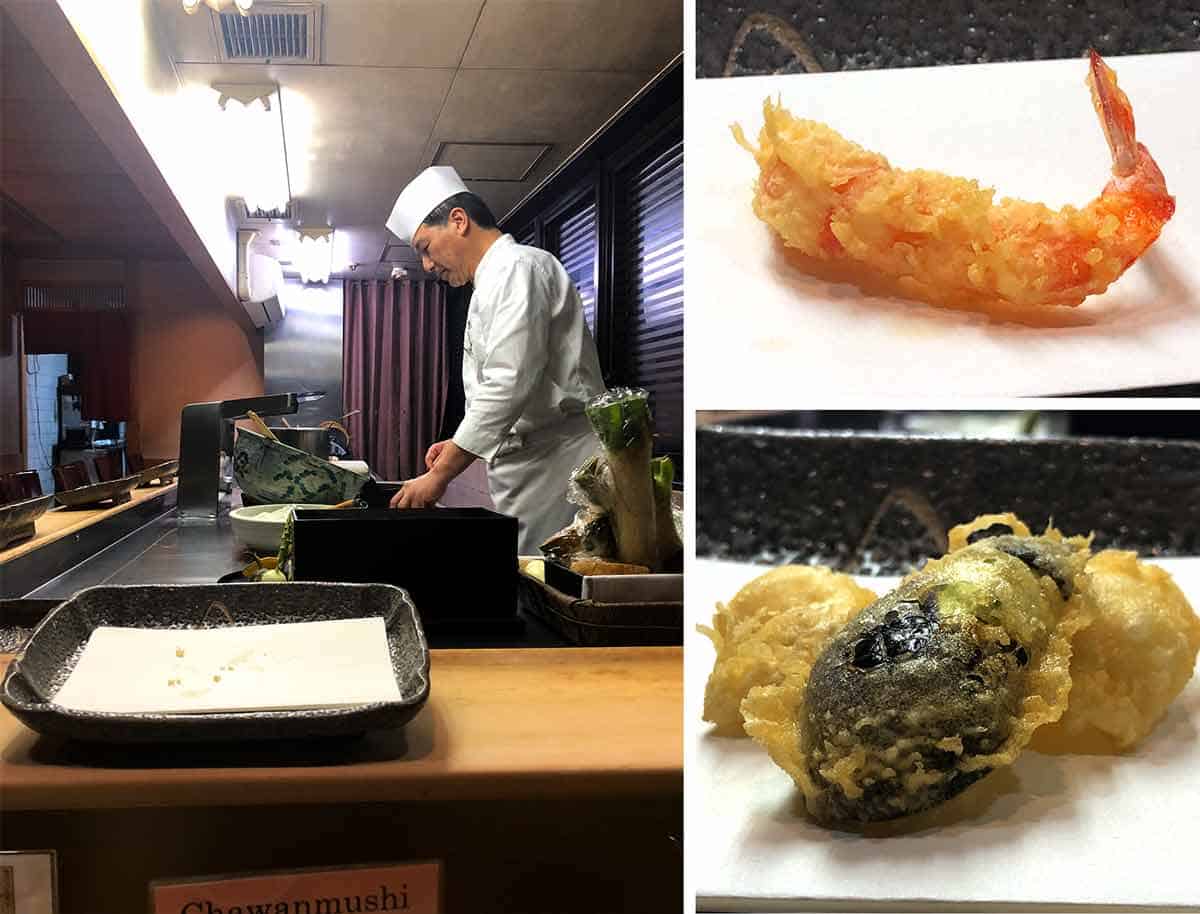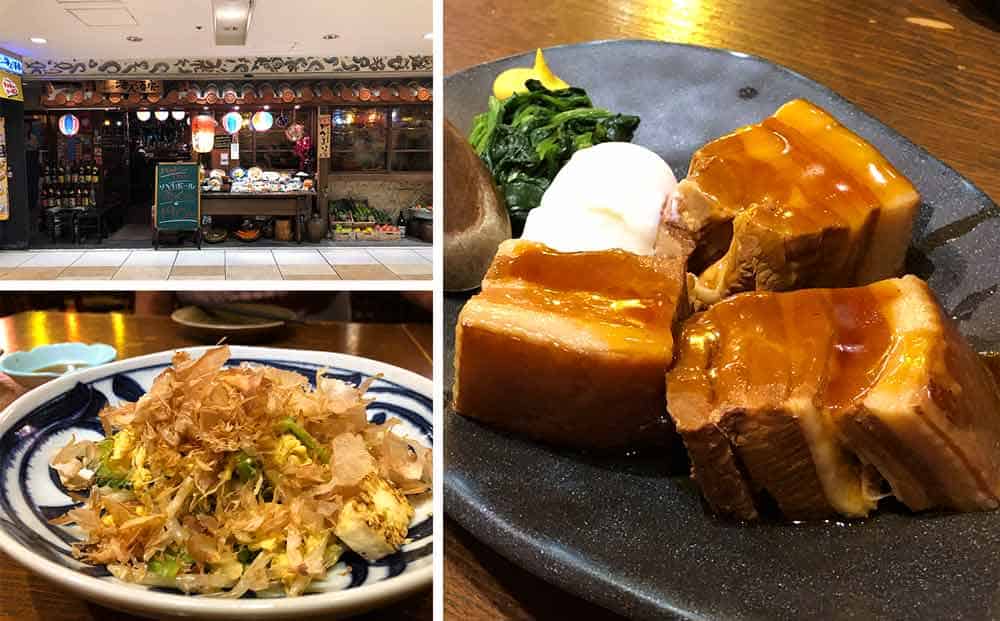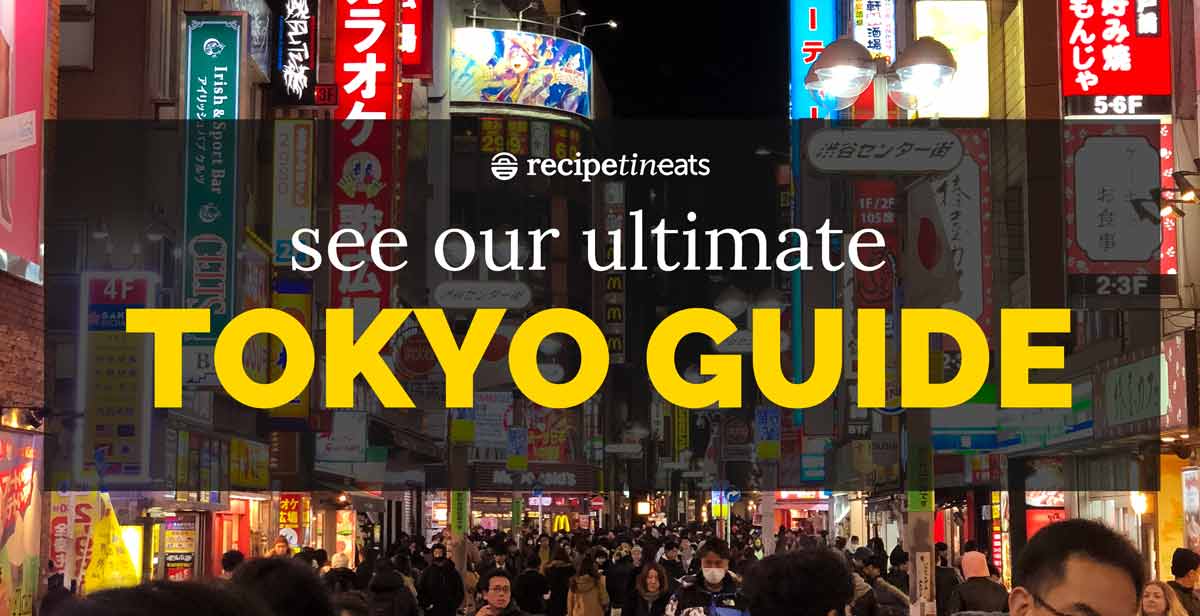Tokyo Station is so vast, it’s almost mini-city in itself! An amazing, sprawling underground maze packed with shops and restaurants as you’ve never seen before, it’s so big I guarantee you’ll get lost at some stage – we still do! Along with Tokyo Station, this guide covers the areas to the west and north-east of the station. This includes the Imperial Palace (home of the emperor), Marunouchi and Nihonbashi.
Tokyo Station Area
Tokyo Station is the city’s central station and main hub for intercity rail connections. 16 different lines converge at Tokyo Station and it sees around 3000 trains pass through it each day. The Marunouchi area is immediately to the west of Tokyo Station. This is foremost a business district and is dominated by office blocks. However plenty of good dining and upmarket shopping options are also available in the area. Many shops and restaurants are found inside large complexes such as Kitte, Shin Marunouchi Building, Marunouchi Oazo among others. North-east of Tokyo Station is Nihonbashi, Tokyo’s most historically important bridge, and the Nihonbashi area around it is named for it. The Nihonbashi area has historically been associated with trade, and today remains a notable shopping destination. As always in Japan, where there are shops there are restaurants and Nihonbashi also offers plenty of good dining options.
What to do around Tokyo Station
Imperial Palace
West of Tokyo Station and Marunouchi are the enormous and beautiful grounds of the Imperial Palace, the official residence of the current Emperor Naruhito and his family. The Imperial Palace was built on the location of the former Edo Castle, from where the Tokugawa shogunate ruled until the Meiji Restoration returned power to the Emperor in 1868. As the Emperor lives here, most of the grounds are off limits to the public. The exception is two days of the year on Jan 2nd and Dec 23rd (this might change as it is the previous emperor’s birthday), when the inner grounds allow visitors.
For all other days, a small part of the inner areas can be seen on a free guided tour. Tours run for about 90 minutes and are organised through the Imperial Household Agency. You can book online (recommended) or just turn up to the office and hope there are places available on the next tour. Tours are only in Japanese, however you can download an app for explanations in English and other languages. Note that tours don’t run on certain days, so see info at end of the page for details. The tour only gives limited access and is not really a must-do in our opinion, so you could easily skip it to spend more time roaming the rest of the grounds. Near the inner grounds are for example the beautiful Imperial Palace East Gardens, open all year round.
Tokyo Station
The oldest part of Tokyo Station is the original building on the western side in the Marunouchi district. This section of the station is easily identifiable by its distinctively European red-brick facade that survives from the Meiji Era when the station opened in 1914. Having suffered extensive damage in WWII bombings, recently completed renovation work has restored this building to its pre-war condition.
Today the bulk of the station’s foot traffic however occurs underground. This part of Tokyo Station is a sprawling maze of passageways packed with shops and restaurants, resembling an underground mall more than a station. Aimlessly wandering this subterranean labyrinth is much of the fun of visiting Tokyo Station, and you will get lost down here (we still do even after all these years!) If shopping is your thing, a few notable retail areas to check out are the quirky Character Street (dedicated to shops selling popular cartoon character toys and gifts), the Daimaru department store, and GrandSta area – all excellent places to pick up a quintessentially Japanese souvenir. Food is usually a depressing affair at most of the world’s central train stations. But of course, this is Japan. Tokyo Station can be considered a dining destination in itself, with the food here as good as anywhere outside in the city and the number of eateries -and for a train station – baffling. Particular concentrations can be found in Gourmet Street, Kitchen Street, and Ramen Street. Check the “Best Food and Drink” section below for some recommendations!
Shopping in Nihonbashi
Mitsukoshi at Nihonbashi is historically significant as Japan’s first department store and is more than 400 years old. Quality and tradition are still the hallmarks here and the branch is especially popular with older shoppers (our late grandmother adored this store). Takashimaya is another historical department store in the area, though not quite as old or hallowed as Mitsukoshi. Both have large and excellent food halls in their basement levels, with Mitsukoshi’s a particular favourite of ours we love to visit time and again. A more recent addition to the Nihonbashi shopping scene is the Coredo development, made up of three separate multi-level buildings. The retail here ranges from tasteful gifts, fashion and quality homewares to the hyper-specialised: a bonito broth tipple at Dashi Bar, anyone?
Best food around Tokyo Station
EKIBEN If you’re catching the Shinkansen out of Tokyo Station, make sure you give yourself time to swing by GranSta or Daimaru’s food hall to pick up an ekiben (literally, “train station bento”) lunch box to eat on the train. Ekibens range from the cheap and simple with just a couple of toppings, to luxuriously elaborate creations boasting thirty or more different components, resembling something closer to a takeaway kaiseki than a lunch to scoff on a train. Plastic replicas displayed around will show what you get inside packages. With so many delicious-looking options, it is the sort of place that will have food nerds (ok, we mean us) paralysed by choice, fretting anxiously over the prospect of inadvertently picking the not-best-bento.
Our personal favourites are oshizushi (pressed sushi) with cured mackerel, anything with grilled gindara (melt-in-your-mouth black cod), and the chirashizushi (scattered sushi) boxes. This web page has some good recommendations for other ekiben you can get, including from other ekiben shops in Tokyo Station. GranSta / Daimaru’s food hall Address: 1 Chome−9−1 Marunouchi Chiyoda-ku, TRokyo (Map) GranSta | Map of Daimaru food hall RAMEN On the B1 level of Tokyo Station near the Yaesu South exit is Tokyo Ramen Street, where eight of Tokyo’s best ramen restaurants have set up shop by invitation. Ramen Street is very popular with the local workers and peak lunch or dinner times will see more queues for food than Communist-era Russia. Rokurinsha, famous for their tsukemen (a ramen style where the noodles are served separately and dipped in strong broth) with chunky and chewy noodles, always has the longest lines. Although Rokurinsha’s soup and noodles are certainly tasty, we are not that into tsukemen personally so find it hard to get excited about. At any rate, these are some of Tokyo’s best ramen shops and you can’t really go wrong no matter which you choose. Ramen Street can be hard to find for first time visitors. Here is a downloadable restaurant guide and floor map for Tokyo station.
Rokurinsha Address: 1 Chome-9-1 Marunouchi Chiyoda-ku Tokyo (Map) Phone: +81 3 3286 0166 (No reservations) Open: 7:30-9:45 (LO 9:30) daily, 10:00-23:00 (LO 22:30) daily Website (Japanese only)|Tabelog page
TEA Ippodo Tea (Marunouchi) In the business for three centuries since first opening in Kyoto, Ippodo has lifted the quality bar about as high it can possibly go in the green tea game over the years. As well as selling packaged tea, there’s a small tea house inside where you can sit and order a cup to sip and enjoy – a great way to try before you buy. When it comes to choosing, helpful staff are happy to guide you with a useful chart covering the varying tea styles and qualities available. Ippodo Tea Address: 3 Chome-1-1 Marunouchi Chiyoda-ku Tokyo (Map) Phone: +81 3 6212 0202 Open: 11:00-19:00 daily, closed on Year end/New Year Website|Tabelog page
IZAKAYA Tetsu-ichi (Tokyo Station) Goodies cooked on a teppan (hot plate) are the go at this cosy izakaya. Meat brochettes, stir fries, yakisoba (noodles) and okonomiyaki (Japanese savoury pancake) are just some of the tasty fare they’ll toss on this Japanese version of a plancha. For those who appreciate the joys of offal, the motsuni (beef intestines slowly stewed in miso) here is outstanding – an izakaya classic that pairs brilliantly with a cap of sake or a cold beer. Tetsu-ichi Address: 2 Chome-1 Yaesu, Chuo-ku, Tokyo (Map). Also at Akabane, Otemachi, Yotsuya. Phone: +81 3 3243 2300 Open: Mon-Fri 11:30-23:00 (LO 22:30), Sat/Sun/PH 11:00-22:00 (LO 21:30) Website (Japanese only)|Tabelog page
SUSHI Nemuro Hanamaru (Marunouchi) Nemuro Hanamaru is a famous sushi chain from Hokkaido, the northern-most island of Japan known for its cold waters rich with beautiful seafood. Yes, Nemuro Hanamaru is a kaitenzushi (conveyor belt sushi) restaurant. Don’t let that fool you though. In Japan, at better restaurants like Nemuro you can also order freshly made. So leave the stuff circling on the belt to the amateurs and go pro by ordering a la carte using the paper order sheets (English menu available) for optimal freshness and choice. We love this sushi restaurant because it’s a rare find that ticks all our boxes. Top grade seafood? Check. Great service and efficiency? Check. Excellent variety with some special offerings beyond the usual? Check. Good prices and value for money? Check. No wonder long queues of locals form outside each day. We suggest going outside peak times, but even then be prepared to wait. When you turn up, take a number from their computerised system. (If you have a Japanese telephone number it will also automatically call you when your seat becomes available so you can wander the Kitte building shops while you wait.) Nemuro Hanamaru Address: 2 Chome-7-2 Marunouchi, Chiyoda-ku, Tokyo (Map). Also in Ginza. Phone: +81 3 6269 9023 Open: Mon-Sat 11:00-23:00 (LO 22:00), Sun/PH 11:00-22:00 (LO 21:00) Website (Japanese only)|Tabelog page
UNAGI Unagi Miyoshi (Nihonbashi) A short walk from the Ningyocho metro station (one stop from Nihonbashi), Miyoshi is an unpretentious local unagi restaurant that’s been operating for over 100 years. Start with a snack of deep fried eel bones to kick the unagi-fest off, then choose from one of the different sets and sizes. We recommend the classic unagi that comes glazed with a sweet soy seasoning, with the house-made pickles and a clear soup with the eel’s liver. The unagi here is as good as it gets and a fine place to have your first taste if you’re a newcomer to the delights of Japanese-style eel. (This year the restaurant was recognised in the 2019 Tokyo Michelin Guide with a Bib Gourmand. No small achievement in a city with 200,000 restaurants!) Unagi Miyoshi Address: 1 Chome-5-6 Nihonbashiningyocho, Chuo-ku, Tokyo (Map) Phone: +81 50 5872 2843 (reservation), +81 3 3664 3440 (enquiry) Open: Mon-Sat/PH lunch 11:30-14:00, Mon-Sat/PH dinner 17:00-22:00 Tabelog page
KAISEKI Saku at Century Court (Marunouchi) We were introduced to this little-known Japanese restaurant through our Tokyo aunt, and have since returned many times for both the food and atmosphere. Intimate in the truest sense, this tiny and hushed restaurant offers just a few small tables and a handful of counter seats facing the chef, where you can observe his hands and his years – or decades, more likely – of experience at work, bringing together your meal over several courses. Here you’ll get a taste of real seasonal Japanese food made from immaculate and sometimes rare ingredients, executed at a level of quality that leaves you shaking your head in awe. If a taste of expertly cooked traditional Japanese food served kaiseki-style is on your checklist, Saku is absolutely for you. Saku at Century Court Address: 2 Chome-1-1 Marunouchi, Chiyoda-ku, Tokyo (Map) Phone: +81 3 7213 1711 Open: Mon-Fri lunch 11:30-15:00 (LO 14:00), Mon-Fri dinner 18:00-23:30 (LO 21:30) Website (Japanese only)|Tabelog page
TEMPURA Tenmatsu (Nihonbashi) A recent find and conveniently located just north of the Nihonbashi bridge, Tenmatsu ticked all the boxes for us as far as tempura restaurants go. We loved chatting with friendly chef and smiling waitstaff, the cosy atmosphere without the stuffy formality of more top-end establishments, and of course the excellent tempura. Various meal formats are available, ranging from simple tendon (tempura on a rice bowl) sets at lunch, to the most elaborate omakase option. If choosing the omakase menu, the ingredients are selected by the chef. Each ingredient is carefully fried and served a piece at a time over the course of the meal, and placed on to a paper-lined plate in front of you as they emerge from the fryer. Each morsel is so perfectly and lightly fried at Tenmatsu they barely leave a trace of oil on the paper they rest on – a classic hallmark of truly fine executed tempura. Prices are very reasonable, with meal options to suit all ranges of budgets. Tenmatsu Address: 1 Chome-8-2 Muromachi, Nihonbashi, Chuo-ku, Tokyo (Map) Phone: +81 3 3241 5840 Open: Mon-Fri lunch 11:00-14:00, Sat/Sun/PH lunch 11:00-14:30, dinner 17:00-21:00 (LO) daily Website|Tabelog page
IZAKAYA Uminchuu Shubou (Tokyo Station) Ever seen an izakaya inside a train station that specialises in Okinawan cuisine? Us neither, until we stumbled across Uminchuu Shubou. An island far south of the Japanese mainland, Okinawa has a cuisine that is an incredibly curious blend of Chinese, South East Asian and Japanese influences that’s highly distinct from that of mainland Japan. Here at Uminchuu Shubou you can try some of Okinawan food’s greatest hits including goya chanpuru (bitter melon and egg stir fry) and soki (braised pork belly), as well as some more obscure local specialities we even hadn’t even seen before. Uminchuu Shubou Address: 2 Chome-1 Yaesu, Chuo-ku, Tokyo (Map). Also at Ikebukuro within Sunshine City. Phone: +81 3 3510 2035 Open: Mon-Fri 11:00-23:00 (LO 22:00), Sat/Sun/PH 11:00-22:00 (LO 21:00) Tabelog page
How to get to Tokyo Station
You can get to Tokyo Station on either of the following.
JR Chuo Line (rapid) JR Yamanote Line JR Keihin-Tohoku Line Tokyo Metro Marunouchi Line
Read the Tokyo Trains section in the Tokyo Travel Guide for information on travelling on trains, and how to figure out which trains to catch where!
Tokyo Station & Imperial Palace Area Map
How to use this map
By restaurant name – Click the icon on the top left to reveal our list of recommended restaurants in this area (see above for more information on each restaurant). Then click on the restaurant for more information about that restaurant as well as highlighting the marker on the map. Zoom in and out by clicking the + and – on the bottom left. Large view – Click the icon on the top right to open a new tab to view the map in full screen. Click a marker on the map to reveal more information about the restaurant.
See our Tokyo Guide!
Born in Japan, raised in Australia, Sydney is our hometown, but Tokyo is our playground. This Tokyo Travel Guide is a culmination of a lifetime of travelling to Tokyo, condensed into one place!!
Asakusa / Shinjuku / Shibuya / Harajuku / Tokyo Station / Imperial Palace / Ginza / Ueno / Akihabara
